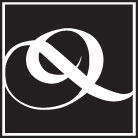Rained all day. Still without a car. Princess in the tower, week four. It was good having the mobility yesterday...and no mobility today was I had to whomp out a whole bunch of stuff in prep for the 2 days we are taking to see the University of Hartford (portfolio show), revisit Hampshire, and tour New Paltz and see their art setup. We will be back on Saturday post Alex's XC meet. I think the following weekend includes Kitty's play and Alex's last dinner for the team. So, having this jaunt (albeit quick) will start putting some bows on the schools for K.
Worked on a series of images for my client's internal program "Accelerate the Momentum"--going to Getty and making a little deck of 50 images collected and curated to communicate speed,motion, action that verges on abstraction. They turned out nicely...and less "Indy car" than the request...so perhaps we can move the literal expectation from some speeding letters with a spinning wheel...to something a bit more elegant and abstract. But, we will see. I asked for them to select a few images that speak to them...to direct where the type could go. The approach could work. Could is the watchword. We will see.
Was reading about Johannes Kelpius (1673-1708) yesterday. I think he is the key to better understanding Conrad Beissel and the Ephrata movement as he was Beissel's mentor and leader of the community Beissel was a member of, prior to splitting off to found the Community of the Solitary. Kelpius came from a moneyed and educated background. He was university educated (University of Altdorf) and became a follower of Philip Jacob Spener, the founder of the sect called Pietists. He became a follower of Johann Jakob Zimmerman, a Pietist leader and scholar. Pietism was a movement that grew within Lutheranism at a time when the state church emphasized the more formal aspects of worship and church life and tended to be aloof from the religious needs of individuals. Across Germany numerous informal groups developed, centering on prayer, singing, and encouragement in the spiritual life. While many of these groups were quite orthodox, others veered off into mysticism and occultism. Such was the group that gathered around Zimmerman, who wished to find a means of combining science (including astrology),alchemy, Kabbala, Christian theology, and mystical occultism.
When in London, Kelpius met Jane Leade, the head of another mystical sect, the Philadelphians. At 21 yrs. old, his mentor, Zimmerman died and left Kelpius to lead about 40 other followers to to the New World (6 months traveling) and upon stepping on the shores in Philadelphia, walked to Germantown and immediately established his community on the shores of the Wissahickon.
From
Sasche, Julius F. The German Pietists of Provincial Pennsylvania. Philadelphia, 1895.:
Kelpius secured land on Wissahikon Creek (now a park in Philadelphia), where they built a forty-foot cube, which became the all-male group's headquarters and home. Discovering the local children were without a school, he founded a school and became their teacher. He also set up an astrological laboratory where members of the chapter watched the heavens for astrological and other signs of Christ's coming. He developed tuberculosis in the harsh weather, but hoped for Christ to return before he died. Meanwhile, he and the brothers gained some income from providing various healing and occult services for the surrounding community.
When Christ did not appear, Kelpius grew increasingly disappointed, a condition not helped by his failing health. In bed during most of the winter of 1706-07, he composed his most substantive writing and the hymn "A Loving Moan of the Disconsolate Soul in the Morning Dawn." Kelpius finally succumbed to tuberculosis in 1708 at the age of 35. He was succeeded by Conrad Matthai. Because the hope for Christ's return was the only force that held the group together, as that hope died, the group disintegrated. Some of the men who stayed in the area continued as healers, astrologers, and occult practitioners and their presence gave rise to what became known as powwow, or hexing, the peculiar form of folk magic practiced in southeastern Pennsylvania.
